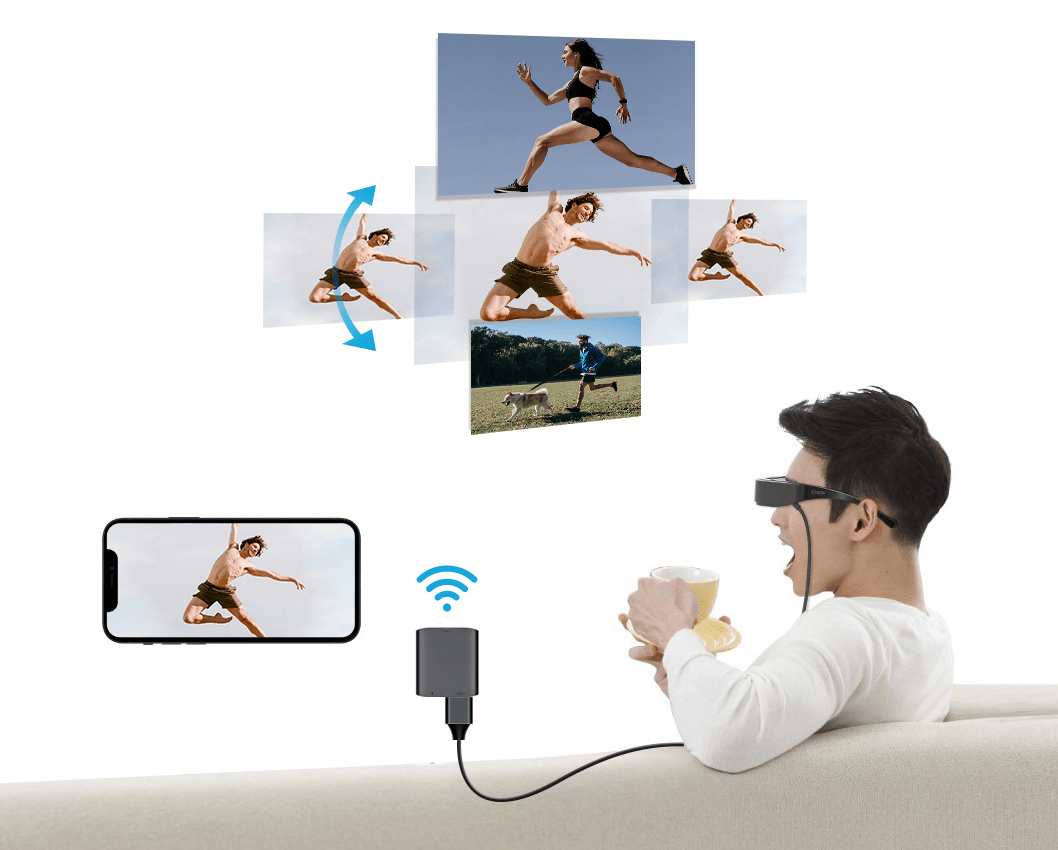Wireless Projection – Intelligent Glasses Wireless Projection Method
There are countless smart glasses on the market today, with prices ranging from a few hundred to several thousand. Faced with a wide variety of smart glasses, many consumers hesitate when choosing. So how to choose smart glasses? What is the difference between VR glasses and AR glasses?
What is the difference between VR glasses and AR glasses? The biggest difference between VA and AR is that all the scenes and elements seen through VR are fake, created through computers. And the scenes and characters seen by AR are partly true and partly false. AR integrates real objects and virtual objects into the real world through the camera (focus), making it more realistic.

Here we will popularize two key words: augmented reality (AR) and virtual reality (VR).
They are two different things, but it is easy to confuse them. Technically speaking, AR is much more complex than VR, and the specific differences are as follows:
The Chinese name of AR is “augmented reality”, which is a new human-computer interaction technology. Through AR technology, participants can interact with virtual objects in real time, obtaining a wonderful visual experience that can break through objective limitations such as space, time, and others, and experience experiences that cannot be experienced firsthand in the real world.
VR is a virtual reality technology that generates a simulated environment through computer technology, while immersing users in the created three-dimensional dynamic reality. It can be understood as a simulation system for the real world.

Based on the differences between VR glasses and AR glasses, Bijie has launched an AR/VR intelligent glasses wireless screen projection solution.
The Bijie AR/VR smart glasses wireless projection solution mainly equips dedicated smart glasses projection devices or integrates wireless projection SDKs, allowing AR/VR smart glasses to achieve interconnection projection with mobile phones and PCs. Compatible with AirPlay, Miracast, Googlecast, DLNA, and BJCast wireless projection protocols.